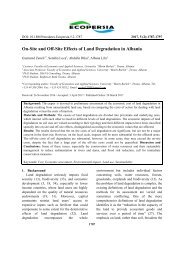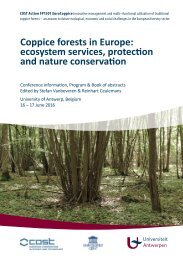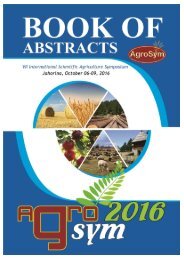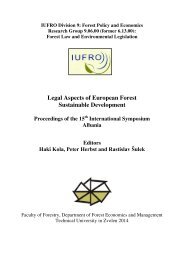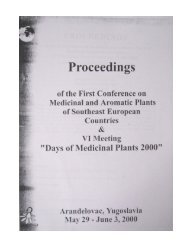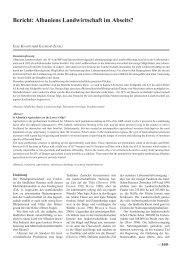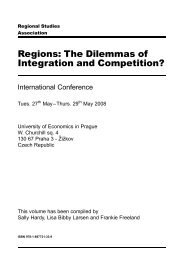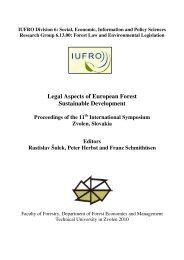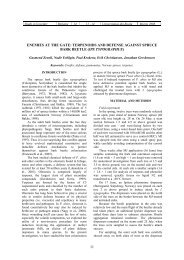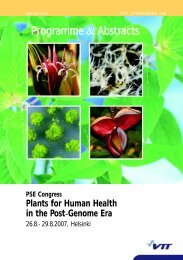You also want an ePaper? Increase the reach of your titles
YUMPU automatically turns print PDFs into web optimized ePapers that Google loves.
INDUCED CHEMICAL DEFENSES IN CONIFERS 3<br />
for at least 50 million years. 13 Oleoresin is composed largely of terpenes, the largest<br />
class of plant secondary compounds. 14 Terpenes are formed by the fusion of C 5<br />
isopentenoid units and classified by the number of such units present in their basic<br />
skeletons. Conifer resin is composed chiefly of monoterpenes (C 10 ) and diterpenes<br />
(C 20 ), with small amounts of sesquiterpenes (C 15 ) and other types of compounds.<br />
Oleoresin has long been believed to play a crucial role in conifer defense because of<br />
its physical properties (viscosity) and repellency to many herbivores and pathogens.<br />
In addition, oleoresin exudes under pressure from the tree following rupture of the<br />
ducts or blisters in which it is stored, often expelling or trapping invaders. 15-18 After<br />
rupture, the monoterpenes volatilize upon exposure to the air, while the diterpenes<br />
polymerize sealing the wound. However, it is still not clear to what extent the<br />
defensive properties of terpene resins are based on the repellency and toxicity of<br />
individual components or on the physical properties of the total resin (see chapter by<br />
Raffa this book).<br />
In P. abies, oleoresin is found constitutively, but may also be induced by<br />
herbivore or pathogen attack. 19,20 We are focusing on the induced resin because of<br />
the potential of altering its production to test its protective role. In preliminary<br />
studies, we tried wounding and fungal inoculation in an attempt to induce terpene<br />
formation in large trees, but this gave variable and inconsistent results (Martin, D.,<br />
Krokene, P., Gershenzon, J., and Christiansen, E., unpublished data). Since<br />
wounding itself can cause the loss of resin, especially the volatile components, we<br />
explored the utility of a non-invasive procedure for resin induction involving the<br />
application of methyl jasmonate, an elicitor of plant defense responses in many<br />
species. 21,22<br />
Methyl Jasmonate Application to Saplings in the Laboratory<br />
When methyl jasmonate was sprayed on the foliage of 1-2 year-old P. abies<br />
saplings from a uniform genetic background, this treatment triggered a dramatic<br />
increase in terpene levels. 23 There was a more than 10-fold increase in<br />
monoterpenes and a nearly 40-fold increase in diterpenes in wood tissue. In contrast,<br />
in the bark there was a much smaller increase in monoterpenes and no significant<br />
change in diterpene levels. Curiously, the response to methyl jasmonate took much<br />
longer than previously-observed inductions of plant defenses with this elicitor.<br />
Significant increases were not seen until 15 days after application. 23 Examination of<br />
the anatomy of the treated saplings revealed that methyl jasmonate had stimulated<br />
the formation of a ring of new resin ducts (traumatic resin ducts) in the newlyformed<br />
xylem (Fig. 1.1). Franceschi and co-workers had previously shown that<br />
wounding of P. abies or infection with Ceratocystis polonica, a blue-stain fungus<br />
vectored by the bark beetle Ips typographus, could induce the appearance of<br />
traumatic resin ducts over a 36 day period. 19 Apparently, this response also occurred<br />
with methyl jasmonate. 24 A change is triggered in the developmental program of the



